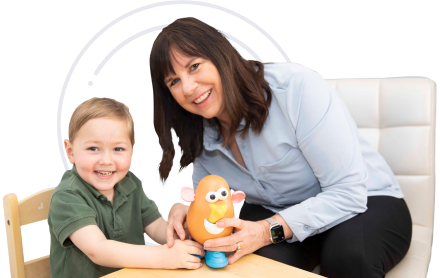Language Development Milestones in Children with Autism
Dr. Mary Barbera
The waitlists to receive an Autism evaluation are getting longer every day, but there are some things you can do to get some insight on where your child or clients stand while you’re on the waitlist. Pediatrician Dr. James Coplan, who specializes in Language Developmental Milestones and diagnosed Lucas in 1999, has an Early Language Developmental Milestones Scale that I want to share with you today.
Auditory Language Development Milestones
The area also encompasses saying mama or dada, whether specific or not, as well as single words, two word phrases and then “cookie monster speech like “Me want cookie.” Three to five word phrases with broken English, leaving out the verb to be in conjunctions will take you from birth to about 36 months in the auditory expressive area.
Want to Learn how to Increase Talking & Decrease Tantrums in Children with Autism or Toddlers Showing Signs?
Want to start making a difference for your child or clients?

Visual Language Development Milestones
Help With Language Development Milestones
Because I’ve been trained in the STAT, which is a Screening Tool for Autism in Two year olds, and the ADOS and MChat and things like that, I do a fair amount of looking at pointing and talking about pointing. That is one of the big red flags for autism. In typical kids, this skill comes in fast and furious very early on. In kids with autism, it’s almost always delayed.
If your child or client is having trouble in any of the three areas, or is delayed with pointing, consider taking one of my free workshops for personal help from me and a community of parents and professionals who are going through the exact same thing.
Want to Learn how to Increase Talking & Decrease Tantrums in Children with Autism or Toddlers Showing Signs?
Want to start making a difference for your child or clients?
